Strategic Sales Turn Discounts Into Long-term Gains That Benefit the Customer, Your Business and the Industry.
Jack Young
- Last Updated: 24 March 2025
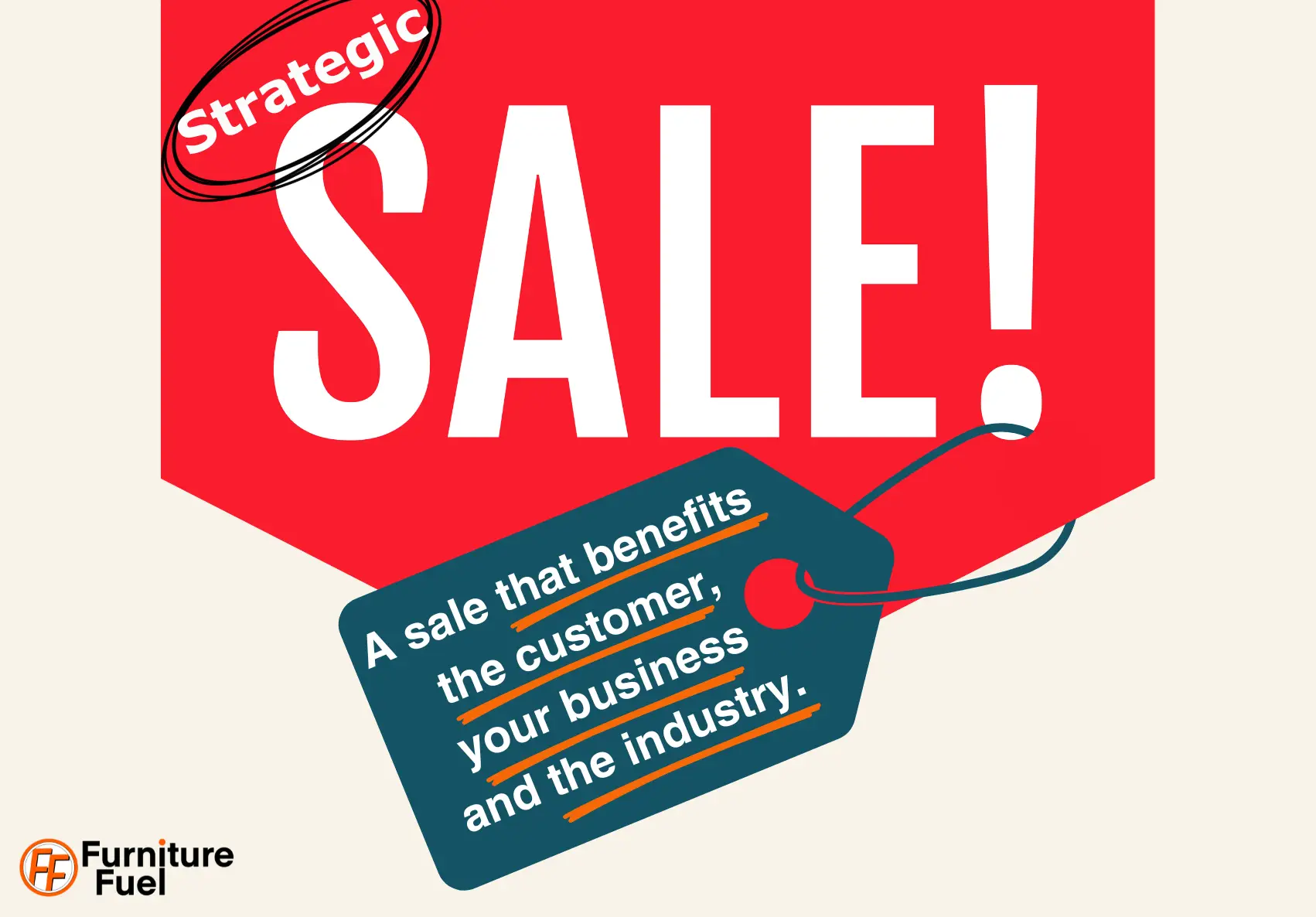
Table of Contents
Key Takeaways – A Strategic Sale.
- Sales Require Strategic Planning: Sales should benefit the customer, your business, and the industry, focusing on long-term loyalty rather than just short-term cash flow boosts.
- Psychological Drivers of Sales: Sales harness powerful psychological principles like loss aversion, FOMO, social proof, and reciprocity to influence decisions.
- Ethical Use of Behavioural Economics: Transparency and consistency are critical in sales to build and maintain customer trust. Avoid manipulative tactics.
- Eroding Brand Perception: Overusing sales can devalue your brand, attract price-sensitive shoppers, and undermine exclusivity.
- Strategic Sales: Have a clear purpose, such as clearing inventory, rewarding loyalty, or attracting new customers. Highlighting the value of your products, not just the price.
- Consistent Value Communication: Emphasise your product’s unique qualities year-round to build a strong foundation for sales campaigns.
- Innovative Boxing Day Strategies: To beat Black Friday chaos and offer pre-Christmas delivery, reward loyal customers with early access to discounts, such as “early Boxing Day savings” in October.
- Avoiding “Sales Sickness”: Imported events like Black Friday exacerbate a culture of constant discounting, harming the retail industry. Focus instead on planned, purposeful sales.
TLDR - Core Summary: How to Make Sales More Effective for Furniture Retailers
To make sales more effective, businesses should implement a strategic approach that aligns with long-term goals and customer needs. Sales events should not be reactive but planned with clear purposes, such as clearing inventory, rewarding loyalty, attracting new audiences, or stimulating demand during slow periods. Leveraging behavioural economics principles—like anchoring, FOMO, and reciprocity—can drive urgency and encourage purchases, but must be used ethically to build trust. Highlighting product value year-round, rather than focusing solely on discounts, helps maintain brand perception. Additionally, pre-sale strategies targeting loyal customers before major sales events like Boxing Day can improve operational efficiency, spread demand, and reduce service issues, creating a more tailored and rewarding experience for both loyal and new customers.
Why Sales Need Strategy
The UK retail industry has many culturally expected sales events like Boxing Day or Easter. Yet, over time, we’ve witnessed an explosion of sales periods throughout the year, turning discounts into a double-edged sword. While sales can provide a short-term boost to cash flow, they often come with hidden costs that can harm your business in the long run.
Sales need to be planned and thought out. They need to be Strategic Sales that benefit the customer, your business and the industry. Sales are more than just a simple incentive. They can be a more powerful tool, transforming sales into long-term loyalty for your business.
Why Do Sales Work? Behavioural Economics at Play.
On the surface, a sale may seem like a simple period during which customers can get products cheaper, but it’s far more complex. Sales tap into powerful psychological principles that drive behaviour. However, these principles only work if the customer wants or needs the product. For example, I’m unlikely to buy hair gel—my remaining strands might not survive the next strong wind.
Nudging
Nudges are generally small cues that can subtly guide customers toward purchasing.
- Anchoring: Displaying the original price next to the sale price makes the discount feel larger, enhancing its appeal.
- Social Proof: Labels like “Best-seller” or “X people have this in their cart” create a bandwagon effect, driving urgency.
- Defaults: Pre-selected popular options, such as a best-selling colour, simplify decision-making and encourage quicker purchases.
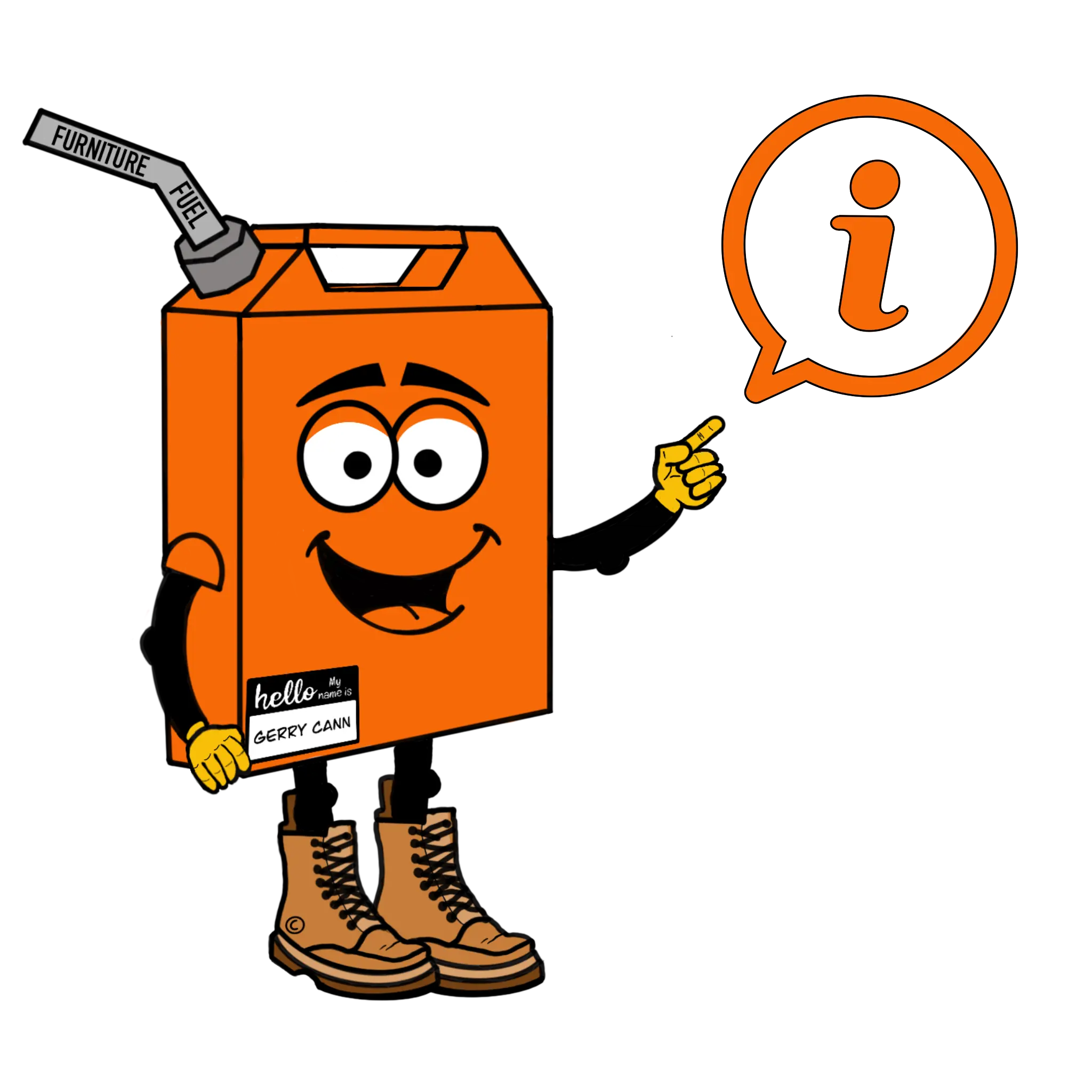
The bandwagon effect is the tendency for people to adopt a behaviour, belief, or trend simply because others are doing it. In retail, it’s often used to create a sense of popularity and urgency, such as highlighting “best sellers” or showing products that are “trending now.”
A sale can be seen as one big nudge, with various minor nudges guiding customers towards purchasing. If a potential customer has been eyeing a product for a while, a sale can be the final push or nudge they need.
Fear of Missing Out (FOMO)
FOMO, or the fear of missing out, is a powerful motivator and one you have likely heard of before. Driven by social pressure and opportunity cost, customers worry they’ll regret missing a deal that others have taken advantage of. Social media amplifies this effect, while scarcity—like “Limited stock available”—adds a sense of competition.
- Limited-time offers (e.g., “Only 48 hours!”) push people to act quickly.
Sales that build FOMO drive immediate purchases and make customers feel like they’ve secured something special.
Loss Aversion
This principle is one of the most fascinating. People feel the pain of losing something more than the pleasure of gaining something of equal value. Customers may see “Save £300” as If I don’t buy it today, I’m losing £300 when it is not on sale, instead of saving £300 today.
- Use comparisons like “Was £999, Now £699”: This works well, but to strengthen the impact, consider rewording it to:
“Was £999, Now £699—Save £300 off the regular price!”
This shifts the focus from simply highlighting the price change to emphasising the cost of not acting, which resonates more with loss aversion. It makes the discount feel like avoiding a penalty or getting rewarded for acting now.


Make the “Save” Price Stand Out: Displaying the “Save £300” in larger, bolder text than the “Was £999, Now £699” boosts the perceived value of the deal by leveraging visual salience. Visual salience refers to the way certain elements stand out more than others in a visual environment, capturing our attention first.
The larger text naturally attracts attention, emphasising the savings and making the discount feel more significant. This also taps into anchoring, framing the deal as a gain and encouraging quicker decisions by highlighting the emotional reward of saving. In short, making the savings the focal point amplifies the deal’s impact, driving action.
Reciprocity
When businesses offer something of value first—such as exclusive early access to a sale—customers feel a psychological urge to reciprocate, often by making a purchase.
Using phrases like “your exclusive discount code” rather than just “a discount code for subscribers” makes customers feel like they’ve been given something special, building the psychological urge to return the favour.
For example, you could offer your previous customers early access to a Boxing Day sale in October—yes, October! This seemingly unconventional move can increase loyalty and drive sales by making customers feel valued. But why does this work? All will be explained—later.
The Franklin Effect on Sales
The Franklin Effect suggests that when people do something for you, they’re more likely to do even more in the future. This principle can work wonders in sales. By encouraging customers to make small investments, like providing feedback or engaging with your content, you create a deeper connection with your business. Once they’re invested in your business, they’re more likely to “give back” through purchases. This psychological principle could create lasting customer relationships and drive future sales.
Using Behavioural Economics Principles in Sales.
Applying behavioural economics principles in sales can be highly effective, but it must be done ethically to maintain customer trust.
The focus should always be on matching customers with the best product or service that suits their needs, creating genuine value, and ensuring they feel confident in their purchase decisions—not manipulating them into buying.
Sales strategies like limited-time offers are most effective when they are clear and transparent. Adding a deadline, clock, or timeframe reinforces trust and helps customers understand the urgency. While some may experience FOMO without a deadline, customers may feel manipulated without this clarity, especially if the sale lacks a defined endpoint, which could lead to scepticism and disengagement from future sales or your business altogether.
Additionally, repeatedly extending sales undermines their effectiveness, as customers may come to expect these extensions, diminishing urgency. This can erode trust, particularly among loyal customers who initially believed the original deadline was firm.
Stick to your original timeframes to maintain urgency and credibility. If extensions are necessary, be transparent about the reason (e.g., “Due to a technical error, many didn’t receive our offer in time, so we’ve extended the sale by 48 hours”). However, use extensions sparingly to preserve customer trust and avoid diminishing the perceived value of your products.
Why Unmanaged Sales Can Hurt Your Business
Many businesses carefully plan their sales, deciding on timelines and working backwards to determine when and what to promote for maximum impact without cannibalising existing full-price strategies. However, some businesses’ sales are reactive or unmanaged, severely harming long-term profitability and brand positioning.
Eroding Brand Perception
Sales can quickly boost revenue, but overusing them risks diminishing a brand’s long-term value.
Frequent sales can cause customers to associate the business or brand with discounts rather than quality or exclusivity, prompting a behaviour shift in the customer.
When customers expect a sale, they delay purchases, waiting for the next promotion instead of buying at full price. The urgency created by FOMO (Fear of Missing Out) is lost when customers expect another sale around the corner.
Attracting Price-Sensitive Shoppers
Excessive sales often attract customers who prioritise discounts over the product’s intrinsic value, reducing the business’s ability to justify premium or even full-price pricing. This can be especially damaging for luxury or niche furniture brands that rely on exclusivity and uniqueness. Frequent discounts create a “mass market” perception, undermining the aspirational appeal that attracts their core customers.
Price-sensitive shoppers are often what we call nomadic buyers. They shop around for the best deals without loyalty to any brand or business. Their relationship with the brand ends once the sale concludes, as their primary interest was the discount, not the product or the brand itself. Focusing more on immediate savings than long-term benefits like product quality, durability, or after-sales service.
Why They May Not Align with Your Business
While price-sensitive shoppers are not inherently undesirable, they may not represent your ideal audience. Designing your sales strategy entirely around them risks alienating loyal customers who value your brand for reasons beyond price.
That said, sales can still be an entry point for price-sensitive buyers. If the discount lets them experience your business’s quality and service, they may become loyal over time. The key is to look beyond price and ensure your overall offering—product quality, service, and design—supports the transition.
Brand Equity Erosion
A brand’s equity is built on trust, quality, and uniqueness. Over-discounting undermines these pillars. Constant sales can make your business appear desperate, reducing exclusivity.
Regular discounts might prompt customers to question your original pricing, assuming products are ordinarily overpriced.
Psychological Impact on Loyal Customers
Sales can unintentionally alienate your loyal customers. Long-term customers may feel it’s unfair for infrequent buyers to access the same discounts. This reduces the satisfaction of customers who previously bought at full price, possibly triggering regret or resentment. The feeling of being not valued.
What Defines a Strategic Sale?
Clear Purpose
A strategic sale isn’t just about applying a blanket discount—it’s driven by a well-defined objective that aligns with your broader business goals. Without clarity, sales can become reactive, undermining long-term value.
A well-timed and thoughtfully planned sale maximises value for both the business and its customers by focusing on discounts where they will create the greatest impact.
- Clearing Inventory: Use sales to move end-of-line products or outdated stock, freeing up space for new collections and preventing inventory stagnation.
- Rewarding Loyalty: Offer exclusive discounts to existing customers, recognising and reinforcing their ongoing support. This can build goodwill and encourage repeat purchases.
- Attracting New Audiences: Deploy sales to attract first-time customers aligned with your target demographic. For instance, discounted entry-level products can entice new buyers who may later explore premium offerings.
- Stimulating Demand: During slow periods or economic downturns, a well-timed sale can reignite interest, maintain customer engagement, and sustain cash flow.
Ensure consistent messaging in sales campaigns reflects your brand’s tone and values. For instance, a luxury furniture retailer might focus on “exclusive opportunities” rather than “massive discounts.”
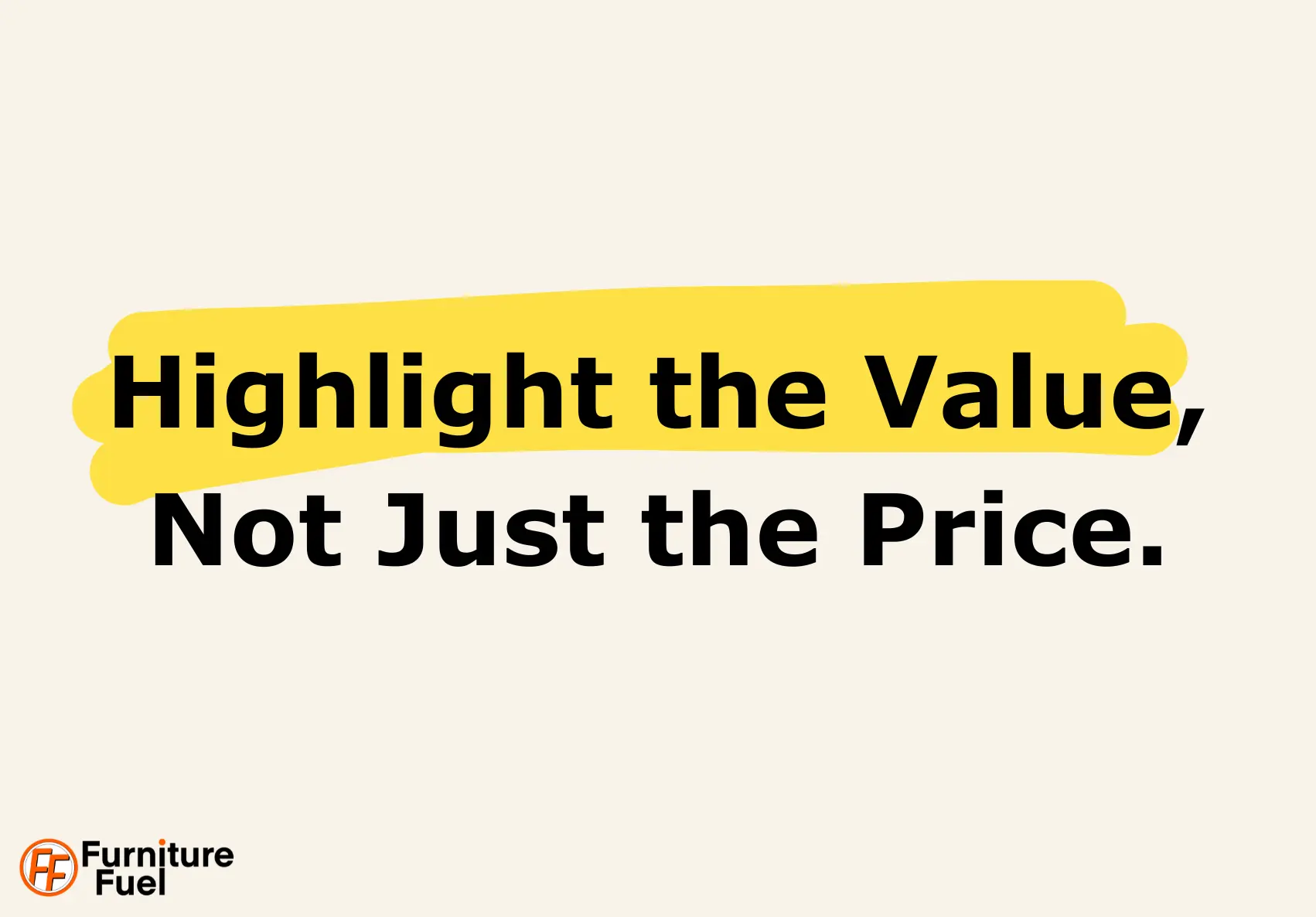
Even during a sale, highlight your products’ craftsmanship, materials, and unique features. Keep the spotlight on what makes your brand distinct to maintain the focus on quality rather than just cost savings.
Consistently Highlight Value Throughout the Year
If customers don’t know your products’ value throughout the year, even the best-timed sales may not deliver the desired results. Customers will struggle to see why your product is worth buying, even at the lower price, if you’re not consistently communicating the unique qualities of your business and its offerings.
Showcase craftsmanship, material quality, or innovative design in your marketing and communications year-round. Emphasise benefits like durability, comfort, or after-sales support to ensure customers recognise your products’ long-term value. By reinforcing value outside sales periods, you create a foundation where discounts feel like genuine opportunities.

Test Percentage vs Monetary Discounts: For products under £100, try percentage discounts (e.g., “25% off”) to make the deal feel bigger. For higher-priced items, test monetary savings (e.g., “Save £25”). Depending on your audience and price points, testing both options can help you determine which framing resonates more and drives better results.
Our weekly newsletter provides digestible content on business strategy, marketing tactics and behavioural economics designed to fuel your furniture business.
Boxing Day Sales: A Strategic Approach
What about sales periods that are practically a given—Boxing Day, January Sales, and the like? These periods, deeply rooted in tradition and culture, have become an expectation in the UK retail sector. Participating in these events can be less about discounting and more about staying competitive.
Customers expect discounts and promotions, and ignoring these expectations risks alienating potential buyers, resulting in the loss of a key revenue-generating opportunity.
Pre-Sale for Loyal Customers
Expected sales periods like Boxing Day don’t need to be predictable. Why not reward your loyal customers with early access to discounts starting in October?
Sending an email newsletter to your loyal customers in October with “early Boxing Day savings” could yield surprisingly strong results.
- Beating Black Friday: You will get ahead of the chaotic Black Friday promotions, allowing you to attract spending before customers are distracted by mass-market discounts.
Imported events like Black Friday stain the retail industry, contributing to the UK’s sales sickness, which is discussed in the next section.
- Pre-Christmas Delivery: Customers who shop early can receive their products in time for the festive season, eliminating the post-Christmas demand delivery delays. More importantly, they get to refresh their homes for those gossiping visitors.
- Eliminating FOMO: By giving loyal customers early access to discounts, they won’t feel the need to wait or fear missing out during the year-end sales frenzy. Meaning more quality time with the family. Pair this with a price-match guarantee to ensure peace of mind if they find lower prices in your end-of-year sale.
This approach positions your brand as one that values and rewards loyalty while providing practical customer benefits. However, it’s not just beneficial to the customers.
Operational Benefits
“Pre-sale” strategies can transform how your business manages peak festive periods.
By distributing demand, you reduce the risk of bottlenecked operations by spreading out sales, usually confined to December/January. This could result in,
- Fewer calls asking, “Do you have an update on my order?” during peak periods.
- More available delivery slots mean customers receive their items more quickly.
- Fewer service issues during the busiest times.
- Reduced stock management and holding requirements.
A ‘pre-sale’ allows you to gather insights into customer preferences. What loyal customers buy can guide stock levels and promotions for your mass market December/January sale to ensure you offer in-demand products. Marketing early promotions to these loyal customers is far more cost-effective, as they already know your brand and trust your products.
With loyal customers pre-served, Boxing Day can become more focused on attracting new customers or price-sensitive buyers without diluting the experience for your existing base.
However, rather than simply following the crowd with the exact dates and discounts as your competitors, you could take inspiration from Mary Portas, who advocated for breaking away from traditional sales tactics. In a 2011 episode of Queen of Shops, Portas advised CLS (which later became Sofology and was acquired by DFS in 2017) to eliminate gimmick sales and price guarantees, arguing they confused customers despite being industry norms. Her approach, while bold, was relatively low-risk for CLS, as it was just one shop, allowing them to experiment with a new strategy with little long-term impact if it didn’t succeed.
CLS created more value without relying on artificial markdowns by shifting the focus to quality, craftsmanship, clear, everyday pricing, and Mary’s new inspiration station. You could apply a similar approach during one of your lesser-performing sales events, testing the no-sale tactic without risking your most important periods.
The episode highlights many areas that still need improvement in the industry and is worth viewing for any furniture business owner.
Sales Sickness: A Major Contribution to a Failing Retail Industry
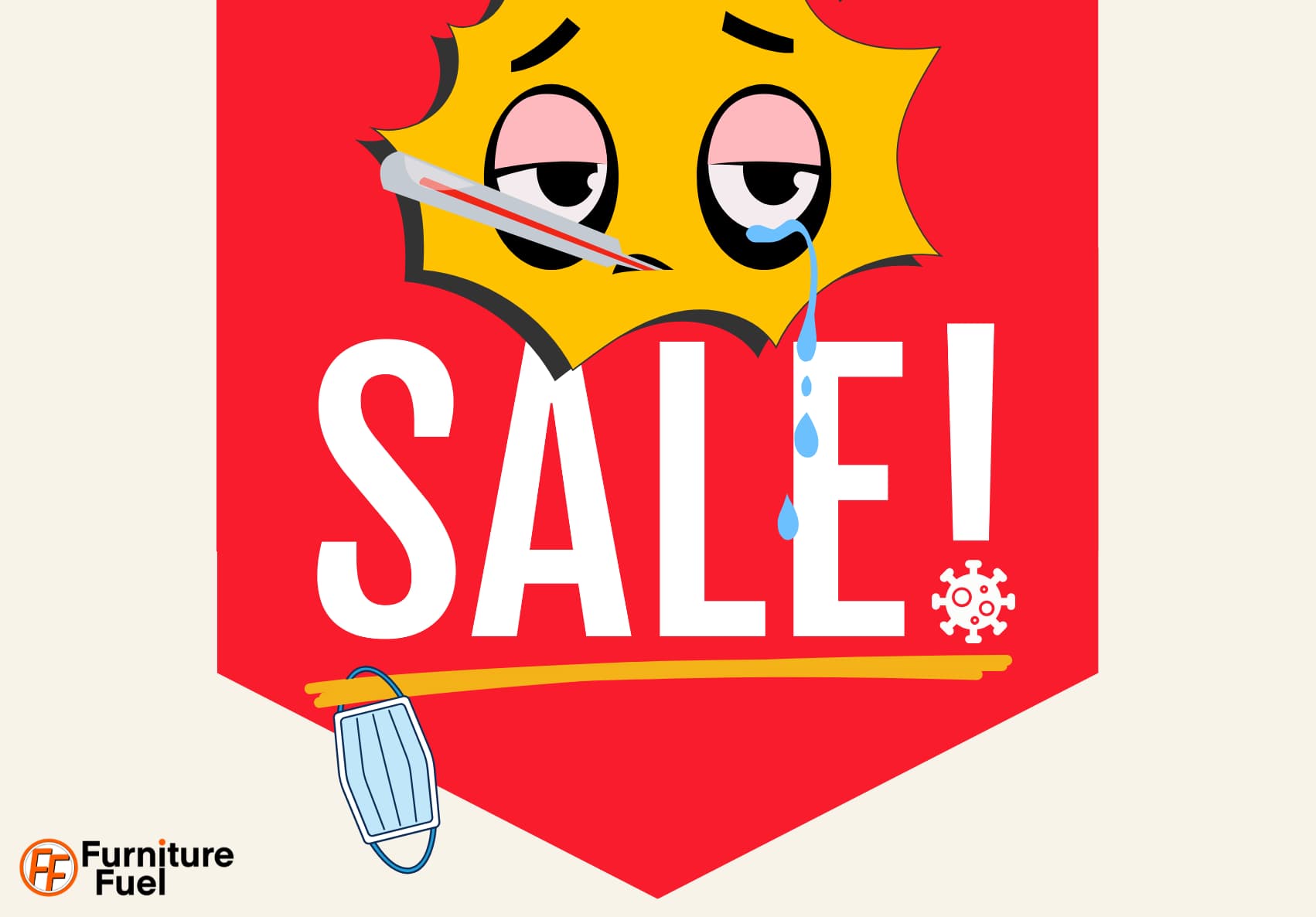
If you go back far enough, you will probably find someone getting a discount in the form of a free sheep or bag of grain, but the concept of the modern coupon was born in 1887 when Coca-Cola offered a free glass of their dark liquid.
Fast-forward to today, and the world has been revolutionised by e-commerce, social media, smartphones, and even smart TVs—all designed to make buying easier than ever.
While these advancements have undoubtedly impacted the traditional brick-and-mortar experience, they’ve also coincided with an unchecked rise in sales promotions. The increase in discounts, particularly during non-traditional times, has had a far-reaching impact that is often overlooked.
For example, consider the rise of imported sales like Black Friday (the busiest shopping day of the year in the United States), which started as a single Friday after Thanksgiving but has now expanded into an entire month in the US and the UK. By stretching what was once a day of urgency into a drawn-out promotional period, retailers have stripped away the behavioural economic principles that made it effective in the first place.
Is it any surprise that Boxing Day and early January sales now feel lacklustre at best?
The reality is that these imported holiday sales have little cultural relevance in the UK. They weren’t adopted to make Americans feel welcome or to align with their traditions; they were introduced purely to boost pre-end-of-year revenue figures.
Sales are beginning to harm individual businesses and the retail industry as a whole, not helping it.
The Hidden Costs of Frequent Sales
One of the most damaging effects of perpetual sales promotions is the creation of false signals about customer behaviour. When buyers delay purchases in anticipation of discounts, it may appear that they are highly price-sensitive. However, this isn’t necessarily true. Many customers might have been willing to pay full price but have been conditioned by frequent promotions to wait.
This cycle skews business perceptions of success. Spikes in sales during promotions may seem like growth, but in reality, they represent a shift in revenue from full-price periods to discounted ones. As a result, businesses double down on sales, continuing a damaging cycle that erodes margins and profitability. Over time, customers see the full price as inflated, reducing trust in the brand and the perceived value of its products.
Worse still, this behaviour has become an industry-wide norm. Customers grow to expect sales, and retailers feel pressured to compete on price, leading to a saturated discount market where no one can sustainably thrive. The focus shifts entirely to price, pushing businesses into a race to the bottom.
How This Impacts Decision-Making

Frequent sales can do more than just hurt margins—they also mask the real drivers of customer loyalty and retention. Businesses may mistakenly believe their customers are solely motivated by price, but often, the issue lies in poor communication of the product’s value. Better messaging around quality, craftsmanship, or exclusivity could convert these same customers without resorting to discounts.
The constant focus on short-term sales gains distracts from more sustainable strategies. Investing in branding, improving the customer experience, or refining product differentiation can build loyalty and long-term success. Relying on sales trains customers to ignore the value of the product at full price, making it harder to build trust and credibility.
Breaking the Cycle
It’s true that cultural norms like Boxing Day sales make it difficult to eliminate discounts altogether. However, this doesn’t mean you can’t test how your customers respond to full-price messaging. Through marketing campaigns, educate your audience about the intrinsic value of your products. Highlighting factors discussed to shift the conversation away from price.
When discounts are offered, reserve them for specific times or groups. Sales or promotions for loyal customers can reinforce the perception that full price is the standard while making the occasional discount feel special and worthwhile.
Discounts can be tied to special occasions that genuinely connect with your audience, creating excitement without cheapening your brand.
Anniversaries: Celebrating milestones for your business can create a sense of shared achievement with your customers. Limited-time offers for your store’s anniversary not only reward customer loyalty but also allow you to frame the discounts as part of a celebratory, one-off event. You are sharing the success with those who made it happen.
Product Launches: Offering early discounts on new collections can incentivise customers to buy early. Once customers have one piece from the range, they may be more inclined to add further items later, generating future revenue.
By reducing the frequency of sales, you also increase their impact. When customers understand the value of your products at full price, a well-timed promotion becomes a true incentive rather than a routine expectation.
And let’s not forget Mary Portas’ work with CLS Sofas (now Sofology). By focusing on product quality and customer experience rather than endless discounts, CLS proved that a clear and confident value proposition can rebuild customer trust. Shifting the focus away from price and onto what makes your brand different can yield far better long-term results.
Related Articles
How to Use Net Promotor Score to Get Customer Feedback About Your Furniture Business
Choose How Your Furniture Business Will Compete – Low Cost, Differentiation or Focus
How to Build and Sustain Customer Loyalty in a Competitive Furniture Market
Brewing Success: Can a Cup of Coffee Really Increase Furniture Sales?


